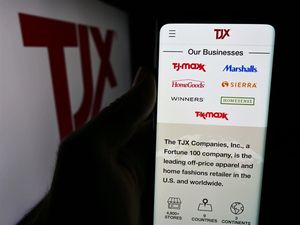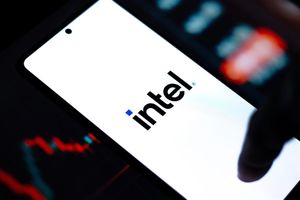In the book Superforecasting: The Art and Science of Prediction, authors Philip E. Tetlock and Dan Gardner wrote, “...it's easy to misinterpret randomness. We don't have an intuitive feel for it. Randomness is invisible from the tip-of-your-nose perspective. We can only see it if we step outside ourselves.”
When it comes to high-profile quantum computing stocks like IonQ (IONQ), such advice really ought to be standard operating procedure.
Citing the work of psychologist Ellen Langer, Tetlock and Gardner demonstrated just how easily people — even the brightest among us — can be duped into finding patterns when there simply aren’t any. Essentially, Yale students were asked to predict the results of a coin toss that was rigged without their knowledge. Those students who oversaw positively biased sessions believed in their own skillset; a phenomenon Langer called the “illusion of control.”
As we know, coin tosses are purely random events. Just because some series of coin tosses may frequently turn up heads or tails doesn’t mean that the practice has suddenly lost its randomness or that the guesser has gained predictive superpowers.
Tetlock and Gardner referred to this mind trick as one of many “delusions” (their words) that we believe in — and pointed the finger at Wall Street as a primary offender. While there wasn’t a direct reference to fundamental and technical analysis, the implications of Superforecasting are quite damning.
Basically, the authors called them garbage methodologies without saying as much.
In Langer’s experiment, she showed just how easily humans hallucinate control in random environments; that is, random at the local, near-term level. For example, technical analysts love pointing to a chart pattern and predicting the subsequent move, while fundamental analysts routinely observe financial streaks and craft narratives of growth or contraction that are inherently unpredictable from said datapoints.
The audience is catching on, which is exactly why we need a new system to understand the dynamic world of equities.
Addressing IONQ Stock from the Quantitative Angle
Quantitative analysis is the study of price behavior, which on the surface sounds like technical analysis. However, the distinction is that quants attempt to measure the probability or the statistical structure of future motion, whereas the technician only measures the motion itself as a property of time.
Basically, technical analysis is a visual record of what happened; quants use advanced mathematics to better determine the likelihood of what could happen next.
Much of the challenge is that pricing behaviors are never fixed when the market is open. Instead, negotiations between bulls and bears constantly occur. Therefore, it’s incredibly difficult to measure probabilistic kinesis unless you utilize advanced tools like kernel density estimations (KDE) to understand the structure of price behavior rather than simply its consequence.
Using a Kolmogorov-Markov framework layered with KDE, the forward 10-week median returns of IONQ stock can be arranged as a distributive curve, with outcomes ranging between $45.30 and $48.80 (assuming an anchor price of $47.88, Wednesday’s close). Further, price clustering would likely be predominant at $46.80.

The above assessment aggregates all sequences since IonQ’s initial public offering. However, we’re not interested in the tendencies of IONQ stock at the collective level but under a specific kind of pressure. In the trailing 10 weeks, IONQ has been structured in a 3-7-D formation: three up weeks, seven down weeks, with an overall downward slope.
Under this heavily distributive setup, the forward 10-week median return shifts positively, with outcomes ranging between $40 and $63. Moreover, price clustering would likely be predominant at around $48, representing about a 2.56% positive variance. That’s a hidden geometry between commonly expected outcomes versus what could potentially happen under 3-7-D conditions.
To be fair, the aforementioned sequence does add uncertainty to the mix. With the risk tail sitting near $40, you’re talking about a possible 16.46% loss of value. However, with the reward tail rising to $63, the upside could be worth 31.58%. As such, the bulls would appear to have the mathematical edge.
Choose Your Own Spread
A long time ago, kids used to read the Choose Your Own Adventure series of books, which were non-linear stories where the reader was invited to select the plot twists at key moments in the narrative. IONQ stock gives you a similar opportunity, except that we can call it, choose your own (debit) spread.
Since we believe that IONQ stock will feature the greatest probability density at $48 (thanks to our KDE analysis), a reasonable spread may be the 43/50 bull call spread expiring Jan. 16, 2026. This transaction involves buying the $43 call and simultaneously selling the $50 call, for a net debit paid of $360 (the most that can be lost).
If IONQ stock rises through the second-leg strike ($50) at expiration, the maximum profit is $340, a payout of over 94%. Plus, the breakeven price is $46.60, which is actually below Wednesday’s close.
Of course, since we also know how much quantum stocks can move, you may consider the 43/55 spread, also expiring Jan. 16. This trade will need IONQ stock to trigger a much higher strike ($55) but for a greater max payout of roughly 129%. With a breakeven of $48.25, it’s aggressive but rational.
Ultimately, choosing how to trade IONQ stock will come down to the magnitude of confidence in the bounce-back narrative. While a $50 trigger price is realistic, a $55 target will yield a greater payout, all other things being equal.
On the date of publication, Josh Enomoto did not have (either directly or indirectly) positions in any of the securities mentioned in this article. All information and data in this article is solely for informational purposes. For more information please view the Barchart Disclosure Policy here.
More news from Barchart
- IonQ Stock is on Discount: Here’s How to Tackle It From a Quantitative Angle
- Here’s How You Can Have Your Cake with AMD Stock and Eat It Too – With Just 6.6% Downside Risk
- Large, Unusual Call Options Trading in GOOGL Stock Highlights Its Value
- High-Probability AMZN Iron Condor with 13% Return Potential






